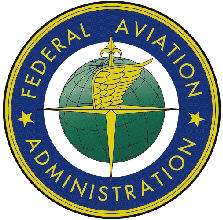AOPA Says Four-Year Plan Still Isn't Finished
 Give credit to improved general
aviation safety. Stop ignoring the effect of security restrictions
on efficient airspace use. Change the rules to allow more WAAS
approaches into GA airports. And for heaven's sake, stop setting
the stage for user fees!
Give credit to improved general
aviation safety. Stop ignoring the effect of security restrictions
on efficient airspace use. Change the rules to allow more WAAS
approaches into GA airports. And for heaven's sake, stop setting
the stage for user fees!
Those are the bullet points of AOPA's comments on the FAA's
latest draft of its "to-do list," the FAA Flight Plan
2006-2010.
"While the FAA incorporated many of AOPA's previous
recommendations in this update, there are still issues that must be
addressed," said AOPA President Phil Boyer. "The FAA should never
forget that general aviation is its 'customer' too — and the
GA pilot is the only one who pays the bills out of his own
pocket."
The Flight Plan is the FAA's strategic planning document,
setting goals for the agency and measuring its progress in
achieving them. And much to the FAA's credit, it has involved its
"customers" and "stakeholders" — the flying community —
in the process.
"We thank the FAA for allowing AOPA the opportunity to share
general aviation's perspective on the flight plan," said Boyer. "We
believe GA will continue to grow, continue to fly securely, and
continue to improve its safety record. With the AOPA-recommended
additions and changes to the Flight Plan, we believe the FAA will
have fully included GA in its mission."
AOPA wants the FAA to highlight the long-term GA safety
improvements in its list of successes. In the last decade, there
has been a 25-percent decrease in general aviation accidents. "The
working partnership of the general aviation community with the FAA
has achieved much of this safety improvement," AOPA said.
 The association also believes that
the addition of GPS-WAAS instrument approaches to more GA airports
would help improve safety. AOPA called for rule changes to allow
that to happen, noting that current regulations, designed for air
carrier airports, prohibit precision instrument approaches into
many GA airports. Requirements for full-length parallel taxiways
and extensive clear zones, for example, are not necessary for safe
instrument operations at non-air carrier airports and are
frequently impossible to implement at many GA airports.
The association also believes that
the addition of GPS-WAAS instrument approaches to more GA airports
would help improve safety. AOPA called for rule changes to allow
that to happen, noting that current regulations, designed for air
carrier airports, prohibit precision instrument approaches into
many GA airports. Requirements for full-length parallel taxiways
and extensive clear zones, for example, are not necessary for safe
instrument operations at non-air carrier airports and are
frequently impossible to implement at many GA airports.
"The Flight Plan must include the severe impact airspace
security restrictions have on general aviation operations and the
air traffic control system," AOPA said. While the FAA doesn't
control security restrictions such as presidential TFRs and the
Washington, DC, ADIZ, "the agency cannot continue ignoring their
effects on the aviation system."
The agency must do a better job of disseminating airspace
information, particularly security-related restrictions. That means
improvements to the notam system. The FAA must also take the lead
to make international navigation data available to users, since the
Department of Defense is withdrawing its charts and databases.
 The FAA must do everything possible
to protect general aviation airports, as access to non-air carrier
airports will be essential to meet the demands of the projected
expansion in GA activity.
The FAA must do everything possible
to protect general aviation airports, as access to non-air carrier
airports will be essential to meet the demands of the projected
expansion in GA activity.
Finally, there is the issue of the FAA "funding crisis."
"AOPA does not agree with the contention that the funding system
is 'broken,'" said Boyer. While the Flight Plan doesn't directly
state that the current system should be replaced with user fees,
"it certainly lays the groundwork," Boyer said. "It is imperative
that the FAA look at its costs and that it identify ways to reduce
the funding needed to provide essential services."
 ANN's Daily Aero-Term (04.24.24): Runway Lead-in Light System
ANN's Daily Aero-Term (04.24.24): Runway Lead-in Light System ANN's Daily Aero-Linx (04.24.24)
ANN's Daily Aero-Linx (04.24.24) Aero-FAQ: Dave Juwel's Aviation Marketing Stories -- ITBOA BNITBOB
Aero-FAQ: Dave Juwel's Aviation Marketing Stories -- ITBOA BNITBOB Classic Aero-TV: Best Seat in The House -- 'Inside' The AeroShell Aerobatic Team
Classic Aero-TV: Best Seat in The House -- 'Inside' The AeroShell Aerobatic Team Airborne Affordable Flyers 04.18.24: CarbonCub UL, Fisher, Affordable Flyer Expo
Airborne Affordable Flyers 04.18.24: CarbonCub UL, Fisher, Affordable Flyer Expo





